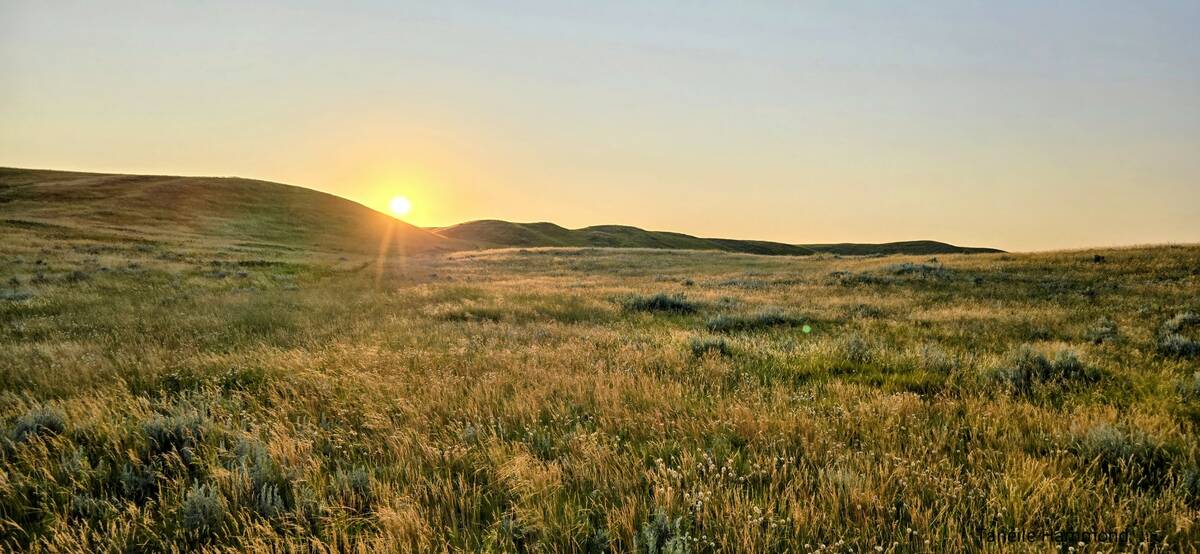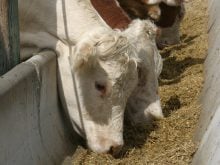MOOSE JAW, Sask. — The Saskatchewan Stock Growers Foundation has signed its first term conservation easement to protect 640 acres of native grassland near Fir Mountain.
Lloyd and Nyla Anderson signed the 25-year agreement with the foundation, saying it is a tool they can use to continue ranching, protect the grass and be rewarded.
“Our family is concerned about the preservation of grassland,” Lloyd Anderson said.
“The section of land was my uncle’s land and I inherited it, and we continue operating it as he had done.”
Read Also

New program aims to support plant-based exports to Asia
Understanding the preferences of consumers in Taiwan and how they differ from Indonesia or Malaysia isn’t easy for a small company in Saskatchewan.
Eight generations of the family have now raised livestock on the land next to the East Block of Grasslands National Park.
He said protecting it for at least 25 years was an attractive option.
“Whether I’ll live long enough to see the end of it, who knows,” he said with a laugh.
“But it will go on to family, and they can decide what to do with it next. Otherwise, we probably wouldn’t have done it. Perpetual is a scary word as far as I’m concerned, but for 25 years it will be as it is.”
The foundation has been working to develop term easements, rather than perpetual, for several years. Anderson said he didn’t think it was important to be the first, and it wasn’t a difficult decision to make.
“We’re being rewarded and we aren’t doing anything different and didn’t plan on doing anything different, and it will be protected,” he said.
“It’s not usable for anything else anyway. You couldn’t farm it even if you wanted to.”
SSGF chair Kelcy Elford said the land is remarkable for its role as habitat for species at risk, including the swift fox, chestnut-collared longspur and Sprague’s pipit. It is also identified as greater sage grouse habitat.
“There is none there right now, but it’s close to the area where they are,” Anderson said.
Elford said the Andersons have “devoted their lives to being a caretaker for this landscape,” which is part of an ecosystem at serious risk. Less than 20 percent of Saskatchewan’s native grassland remains intact.
“The land under easement holds incredible ecological value and ties directly into a large corridor of existing privately owned native grassland in southern Saskatchewan,” Elford said.
The easement is tied to land title and comes with land use restrictions, even if ownership changes. The land cannot be cultivated, developed or drained. Once the term ends, the SSGF is removed from the title or the landowner can apply for another easement. Terms lengths are 25, 30, 35, 40 years or more.
The SSGF worked with the Weston Family Foundation to fund the program. Foundation chair Garfield Mitchell said the term “easement” fits the organization’s mission to protect habitat by enabling land stewards.
Foundation general manager Brant Kirychuk said it has a responsibility to the funders to check on the land every once in a while, but otherwise land owners carry on as usual.
He said it takes nine months to a year to get through the full process of land appraisals and other work required for the easement. The land is appraised for market value before the easement and then again for the reduction that comes with an easement. He said land is devalued between 24 and 30 per cent, on average, depending on where it is, he said.
About 20 landowners, representing 16,000 acres, have expressed serious interest in term easements. The appraisals have been completed for six of those, and Kirychuk said they’ve found land is devalued between 24 and 30 percent, on average.
Another four easements are at various stages of completion.
Elford told the SSGF annual meeting the foundation will need more money to offer all of its programs.
“We’re finding ourselves oversubscribed with many of our agreements with the current year’s funding,” he said.
The foundation is seeking donor support and corporate donations to add to its budget.
Overall, the SSGF has 52 agreements signed, or close to signing, covering 650,000 acres, for its programs, including habitat management, habitat restoration and grass bank agreements.


















